Hummingbirds are probably one of the most beloved groups of birds that people want to attract to their yards. And the first thing that pretty much everyone does to attract hummingbirds is to put up a feeder. I get it. That’s what my family did when I was a kid and it’s what a lot of people still do.
But did you know that only about 20% of a hummingbird’s diet consists of nectar? That means our feeders are only providing an artificial substitute for a relatively small percentage of what a hummingbird needs to eat. So, what makes up the majority of a hummingbird’s diet?
The surprising answer is small insects which provide the birds with protein and other essential nutrients. We don’t really think about hummingbirds as voracious predators, but that’s exactly what they are.
Now, there’s nothing wrong with putting out hummingbird feeders as long as we maintain them properly. But they’re really more for our benefit because they bring the birds to a centralized location that’s easy for us to observe, than they are for the benefit of the hummingbirds themselves.
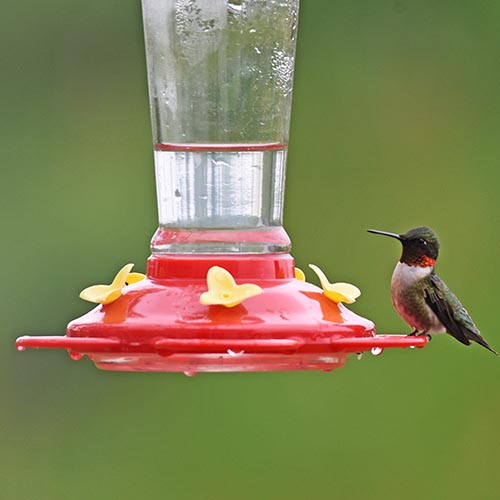
The best way to not only attract, but also support, hummingbirds is to plant lots of native plants. In fact, nesting hummingbirds seem to prefer natural nectar from flowers over sugar water in feeders. That’s why many people report seeing a mid-summer drop in the number of hummingbirds visiting their feeders.
But native plants, provide another crucial food source for hummingbirds – the small insects attracted to those plants. In the spring, I often watch hummingbirds hovering near the fleabanes that grow in our yard. They aren’t drinking nectar from the fleabane flowers. Instead, they are darting in and snatching insects out of the clouds of tiny, gnat-like bugs flying above the flowers. We continue to see similar activities over other flowers throughout the summer. Once you know what you’re looking for, it’s so much fun to watch.
So, here are 10 of my favorite native plants for attracting hummingbirds. Each of these has a relatively wide range throughout the eastern U.S. and each works really well in garden settings. I’ve listed the plants roughly in order of bloom time, because, well, they’re all my favorites and I had a hard enough time just reducing the list to 10. There’s no way I could pick a top favorite.
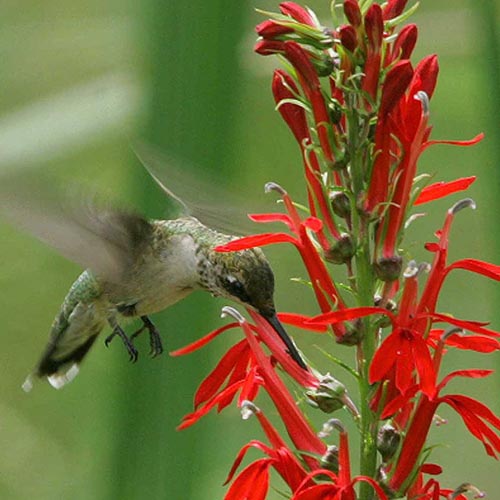
My Favorite Hummingbird Plants for Eastern U.S. Gardens
Coral honeysuckle (Lonicera sempervirens)
Coral honeysuckle is a semi-evergreen, herbaceous vine that produces clusters of small, red, tubular or trumpet-shaped flowers throughout most of the growing season. Where I’m at in southcentral Kentucky, they start blooming sometime in early April and I’ve seen one or two blooms still hanging on as late as Christmas when we’ve had a warmish late fall and early winter. Essentially, it starts blooming about the time that the hummingbirds show up in the spring and keeps going until the last of our ruby-throated hummingbirds should have moved through the region.
According to BONAP, its primary native range is Kentucky and south, then partway up the eastern coast. However, it will grow outside of its native range and in some of those places has escaped cultivation and can now be found growing in the wild outside of its native range.
If you want to learn more about coral honeysuckle, we have a video about it and 2 other vines that hummingbirds love.
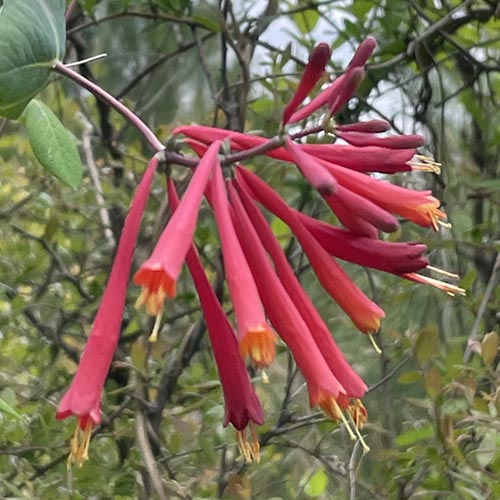
Eastern Columbine (Aquilegia canadensis)
When you ask me about native flowers for hummingbirds, this is almost always one of the first that pops into my mind. Eastern columbine has beautiful reddish-orange flowers that bloom in the spring. I usually find my first columbine blooms within a week or so, of when I see my first hummingbird.
It can grow in a variety of conditions including really shallow, rocky ground. In the wild, I often find it growing in rock cracks or on rock ledges. According to BONAP, the primary native range for eastern columbine is Tennessee and north.
One quick note about eastern columbine. All of the columbines, including our native eastern columbine, will hybridize. So, if you have other columbines growing in your garden, then any of the seeds that you collect or let naturally sprout could be hybrids.
We also have a video about eastern columbine if you would like to learn more about it.
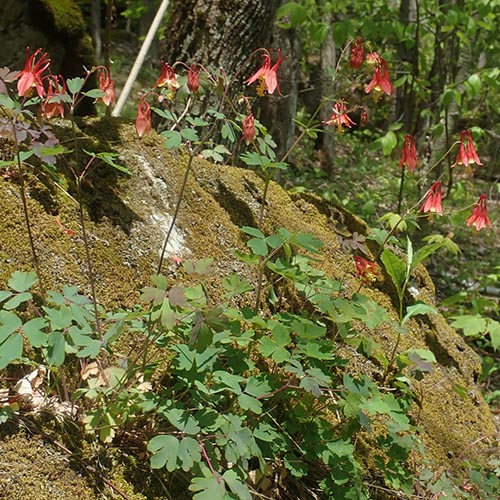
Milkweed (Asclepias sp.)
There are lots of different species of milkweeds which are native to the eastern U.S. None of them are native to the entire eastern U.S., but you likely have at least one species of milkweed that is native to where you live. And of course, milkweeds are great not only for hummingbirds but also for lots of other animals including monarch caterpillars.
Some species of milkweeds work better in garden situations than other species. I recently did a whole blog and podcast covering milkweeds that work well in eastern U.S. gardens. If you’re interested, you can find that blog and podcast here.

Beardtongues (Penstemon sp.)
Beardtongues, or Penstemons, have large tubular flowers that tend to be white, pink, blue, or purple depending on the species. Their primary pollinators are hummingbirds and bumblebees, with some species being more attractive to one or the other, especially in the West or in higher elevations.
According to BONAP, there are 8 species of beardtongues that are native to at least several states in the eastern U.S. with a few other not-so-wide-spread or common species. There are also lots of non-native Penstemons available through the traditional horticulture trade.
Like with columbines, different species of beardtongues will readily hybridize with each other. So, you’ll want to be aware of that if you are trying to grow multiple Penstemon species in your garden.
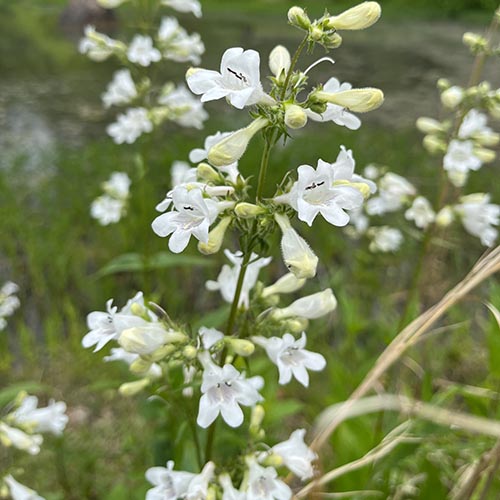
Purple coneflower (Echinacea purpurea)
Purple coneflower has beautiful purple flowers that look more like daisies or sunflowers in shape, than anything we would typically think of as a “hummingbird flower.” But my hummingbirds absolutely love them. Not only will they nectar from the flowers, but they’ll also hunt for small insects visiting the flowers.
Purple coneflowers are really easy to find for sale, or to grow from seed. They’ve been incorporated into the traditional horticulture trade for decades and can often be found in the garden centers of big box stores. There are also multiple cultivars which can allow you to get a red purple coneflower or a white purple coneflower, although how much hummingbirds or other pollinators uses those cultivars will vary.
However, despite the near ubiquitous inclusion of purple coneflowers as a part of native plant gardens throughout the eastern U.S., they actually have a pretty limited range in this region according to BONAP. That doesn’t mean they won’t grow in other parts of the eastern U.S., just that they may not be the right species for you if your goal is for 100% of the species in your garden to be native to where you live.
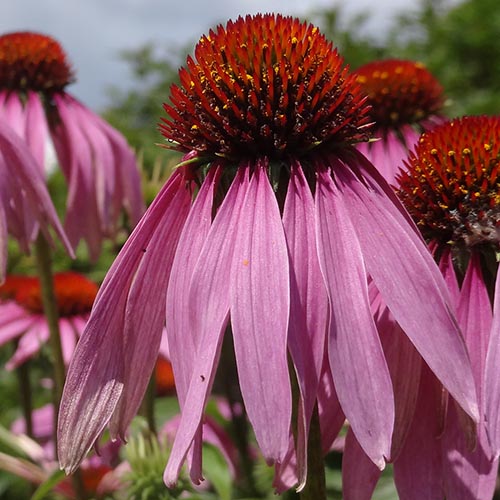
Great Blue lobelia (Lobelia siphilitica)
Great blue lobelia has beautiful spikes of blue flowers that bloom in the midsummer. It’s often thought of as a bumble bee plant, but hummingbirds also love it. In fact, I’m watching a hummingbird visit some of our blue lobelia as I write this.
Its primary native range in the eastern U.S. according to BONAP is Tennessee and north with a few scattered spots further south. If you want to learn more about great blue lobelia, we have a video about it and 2 of its close cousins.
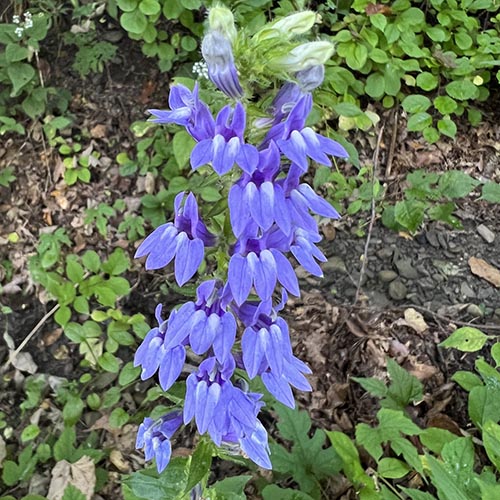
Cardinal flower (Lobelia cardinalis)
Cardinal flower is another one of our native plants that immediately jumps to my mind when asked about native plants for hummingbirds. It has spikes of bright red flowers that just scream “hummingbirds” to me. And it lives up to that image.
Cardinal flower is a hummingbird magnet in my region, and I have been repeatedly dive bombed for getting too close to “their” flowers. Just as a side note, the cloudless sulphur butterflies also frequently visit the flowers in the late summer and early fall. I think their yellow wings against the bright red flowers is absolutely stunning.
This is one species that has a very wide native range which encompasses most of the eastern U.S. (and beyond) according to BONAP. Again, we have a video for you if you want to learn more about cardinal flower and 2 of its close cousins.
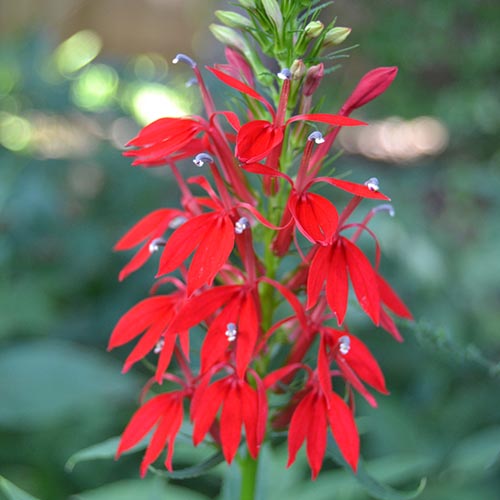
Blazing star (Liatris sp.)
Blazing stars produce beautiful spikes of purple flowers that are highly attractive to hummingbirds, butterflies, and bees. There are around 10 different species of blazing stars that are native to at least several states in the eastern U.S. according to BONAP, with a few other species with more restricted native ranges in the East. There aren’t many native blazing star options in the East once you go north of Kentucky.
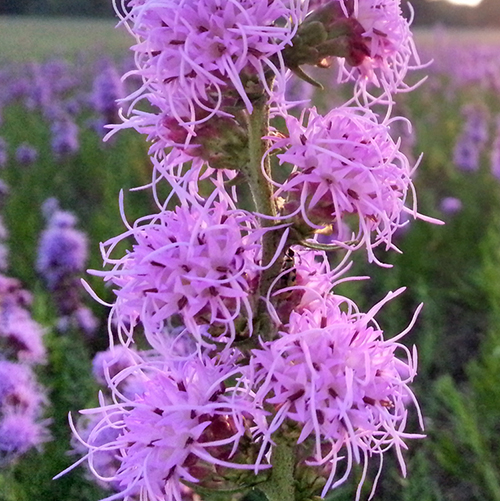
Jewelweed (Impatiens sp.)
We have 2 different species of jewelweeds that are native to the eastern U.S. – orange jewelweed (Impatiens capensis) and yellow jewelweed (Impatiens pallida). Yellow jewelweed tends to be more common in Tennessee and north, while orange jewelweed has a much wider native range that covers much of the eastern U.S.
I love jewelweed, especially orange jewelweed. The flowers just glow in the late summer and fall. We have a wet field that is full of orange jewelweed and it is absolutely covered in hummingbirds during the fall.
Jewelweed is an annual, but it self seeds readily and will maintain itself if it likes the area. We have a video about jewelweed if you would like to learn more about it.
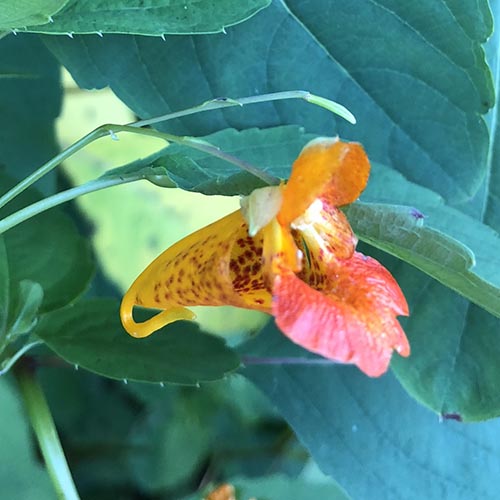
Obedient plant (Physostegia virginiana)
Obedient plant has spikes of pinkish purple, tubular flowers in the fall. They’ll bloom pretty late into the growing season. I love them in garden settings and the hummingbirds love them too. They do spread by runners though, and while they aren’t nearly as aggressive as some other plants that spread that way, that feature may not make them appropriate for some garden designs.
Their native range extends throughout much of the eastern U.S. according to BONAP. Also, if you’re in the Deep South, you have a couple of other species in this genus that are native to where you live and might be worth checking out.

Summary
The best way to attract and support hummingbirds is to grow a wide variety of native plants. Those native plants will not only provide your hummingbirds with nectar, but also with the small insects that make up the majority of their diet. Growing native plants for hummingbirds is also fun and can provide you with an absolutely gorgeous garden that, if done properly, is relatively easy to care for.
Now, if you also want to put out a feeder to bring the hummingbirds to a location where it is easier for you to observe them, then here’s a video about how to properly maintain your feeders.
If you would like personalized help creating your own pollinator and wildlife habitat, then we encourage you to check out the Backyard Ecology™ Community.
There’s lots of great “big picture” information available about creating pollinator gardens or larger habitats for pollinators and wildlife. What’s lacking are opportunities to say, “This is what I want to do. This is what I’m struggling with. How do I make it work on my property?”
That’s part of what the Backyard Ecology™ Community offers its members every day.
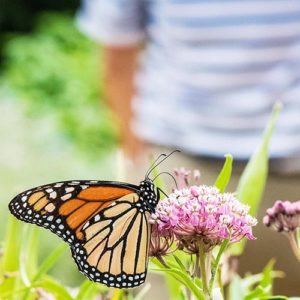
Thank you!
These amazing individuals go above and beyond every month to provide financial support which helps us create so much free content for everyone to enjoy and learn from.
Julie Krygier, Lizabeth, Russel Furnari, Crystal Robinson, Karen Veleta, Kevin B, Sally Mirick, Crystal Dyamonds, Mitchell Bell, Laura Hunt, Sue Ann Barnes, Adrienne Richardson, J. Adam Perkey, Ariel, Cara Flinn, David Todd, LaVonne Fitts, Cathy, Michael, Tom Winner, Eric Fleming, Julie, SB H, Christopher Scully, Craig, Rachel Antonucci, Melissa Egbertson, Switzy, CotswoldsCottageMA, Vilma Fabre, Pia O Nomata, Linda McNees, HerculesBiggerCousin, Patrick Dwyer, Paul Gourley, Lilith Jones, John Master, William Morin, Lori Sadie Ann, Debra, Ayn Zitzman, Han Mad, Isaac Kowis, Cathy Anderson, Betsy Lessels, Reid, Dave Teare, and Debra Moore.
Backyard Ecology™: Creating thriving backyard ecosystems that you can enjoy and be proud of
We created Backyard Ecology™ to help you confidently create pollinator and wildlife habitat that you can enjoy and be proud of. Because nature isn’t just “out there.” It’s all around us, including right outside our doors.
Our focus on the eastern U.S. means that the information we share is applicable to you and where you live. Join us as we ignite our curiosity and natural wonder, explore our yards and communities, and improve our local pollinator and wildlife habitat.
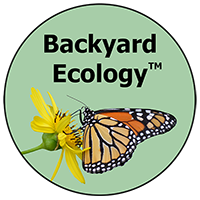
Backyard Ecology™’s Guiding Principles:
🦋 Curiosity: Nature is fun, interesting, and worth exploring. We will never know everything. Answers lead to more questions. That’s half the fun.
🦋 Balanced: You don’t have to choose. You can support nature AND have a beautiful property that you can enjoy and be proud of.
🦋 Science informed: Habitat creation and management should be based on the latest scientific research available. This is true regardless of whether you’re working in a small garden or on hundreds of acres.
🦋 Stewardship: Anyone can make a positive difference in the natural world and leave an ecological legacy on their property.

Leave a Reply